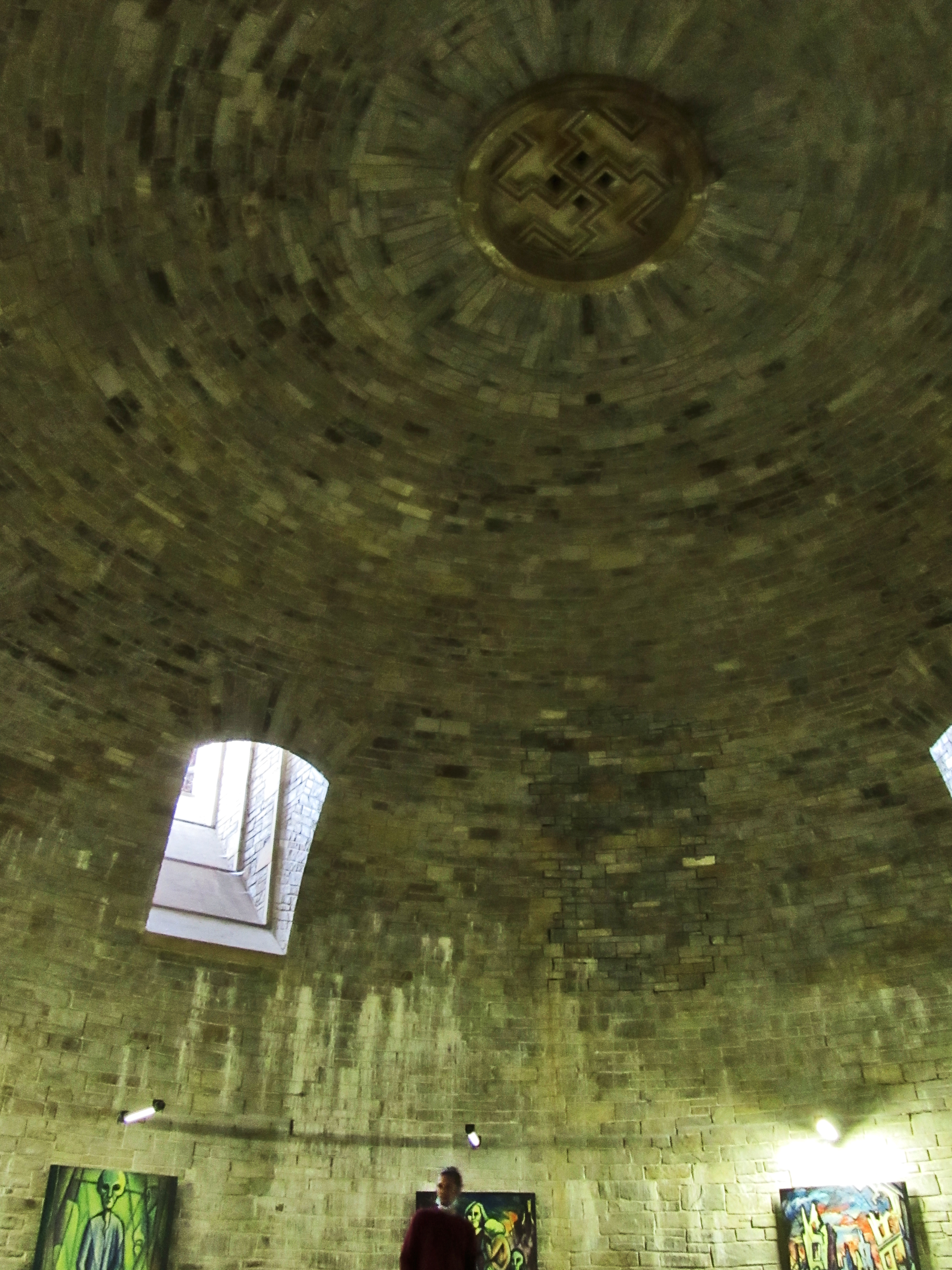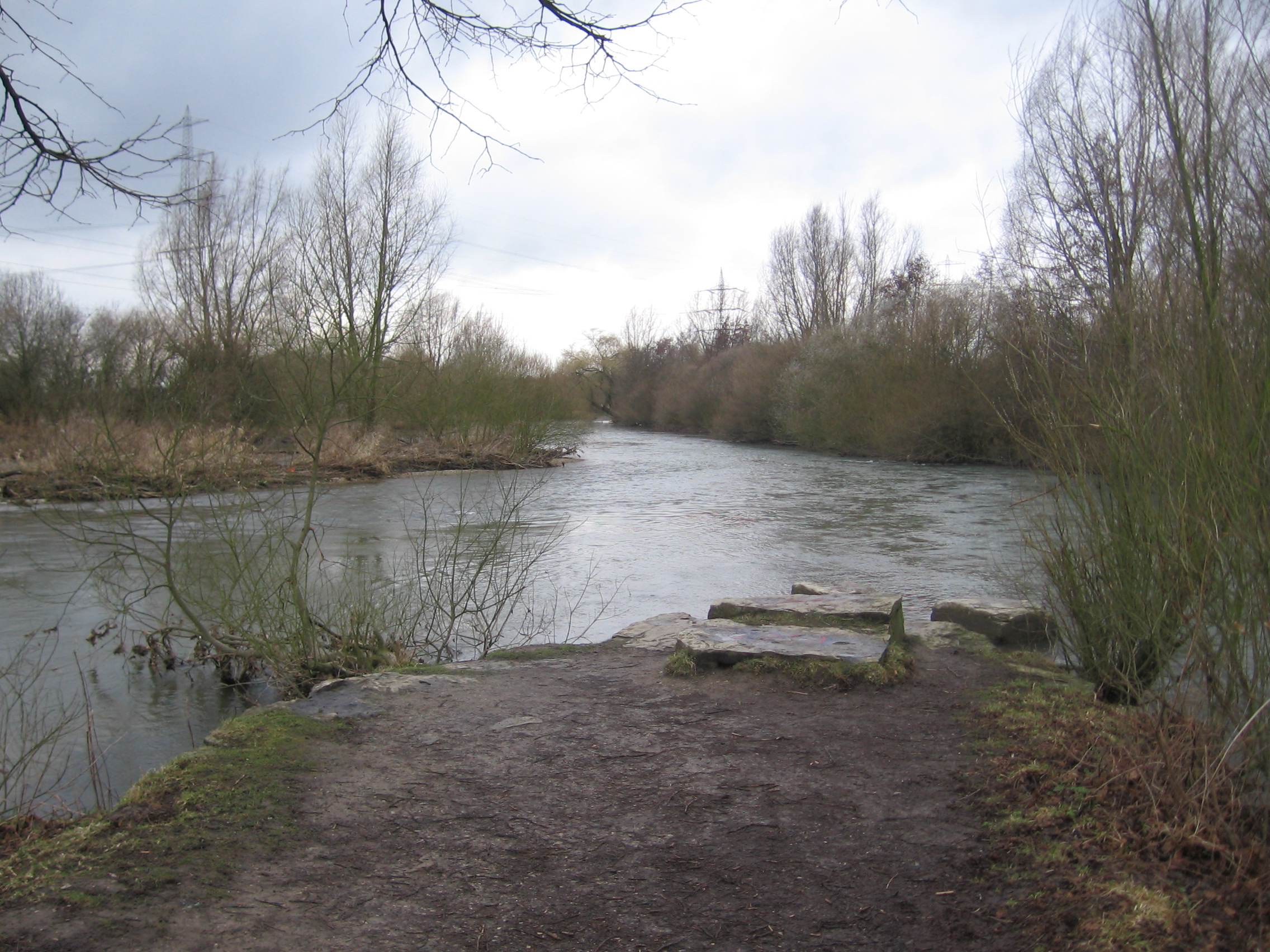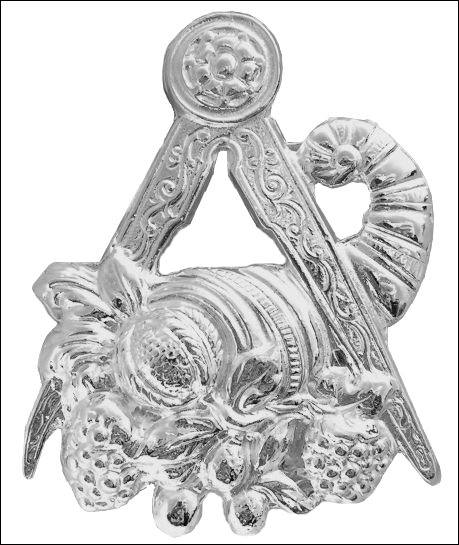|
Wewelsburg
Wewelsburg () is a Renaissance castle located in the village of Wewelsburg, which is a district of the town of Büren, Westphalia, in the ''Landkreis'' of Paderborn in the northeast of North Rhine-Westphalia, Germany. The castle has a triangular layout, with three round towers connected by massive walls. After 1934 it was used by the SS under Heinrich Himmler and was to be expanded into a complex which would serve as the central SS cult-site. After 1941 plans were developed to enlarge it to be the so-called "Centre of the World". In 1950 the castle reopened as a museum and youth hostel. (The youth hostel is one of the largest in Germany.) The castle today hosts the Historical Museum of the Prince Bishopric of Paderborn and the Wewelsburg 1933–1945 Memorial Museum. History Earlier structures Predecessor buildings existed. One of these, the Wifilisburg, was defended during the 9th and 10th centuries against the Hungarians. Count built another predecessor fortificati ... [...More Info...] [...Related Items...] OR: [Wikipedia] [Google] [Baidu] |
Wewelsburg (village)
''For the Castle of Wewelsburg see Wewelsburg'' The Germany, German village of Wewelsburg has been part of the town of Büren, Westphalia, Büren (Westphalia) in the district of Paderborn since a local-government reform in 1975. The village is above the River Alme River, Alme and surrounds Wewelsburg castle on the north, east and south. External links The town of Wewelsburg Villages in North Rhine-Westphalia Paderborn (district) {{Paderborn-geo-stub ... [...More Info...] [...Related Items...] OR: [Wikipedia] [Google] [Baidu] |
Büren, Westphalia
Büren () is a Town in the district of Paderborn, in North Rhine-Westphalia, Germany. Geography Büren is situated at the confluence of the rivers Alme and Afte, approx. 20 km south-west of Paderborn and approx. 30 km south-east of Lippstadt. Neighbouring municipalities * Brilon * Geseke * Rüthen * Salzkotten * Bad Wünnenberg Division of the town After the local government reforms of 1975 Büren consists of the following districts: Transportation Train connections to the outside world are laid off. Twin towns – sister cities Büren is twinned with: * Kortemark, Belgium (1981) * Charenton-le-Pont, France (1989) * Mittersill, Austria (1995) * Ignalina, Lithuania (2003) Culture and notable places The village of ''Wewelsburg'' is the home of the Wewelsburg Renaissance castle, which was a focus of SS mythology during the Nazism Nazism (), formally named National Socialism (NS; , ), is the far-right totalitarian socio-political ideology and pract ... [...More Info...] [...Related Items...] OR: [Wikipedia] [Google] [Baidu] |
Alme River
The Alme is a long river in North Rhine-Westphalia, Germany. It is a left tributary of the Lippe (river), Lippe, into which it flows near Paderborn. The Alme defines the Alme Valley and flows through the towns Büren, Westphalia, Büren, Borchen and Paderborn. Tributaries * Nette (Alme), Nette * Gosse (river) * Afte * Altenau (Alme), Altenau History Flood of 1965 In July 1965 a devastating flood occurred, which became part of regional history as a once-in-a-hundred-years flooding and is remembered by locals as the "Heinrichsflut" (Henry's Day Flood). After heavy rainfalls from July 15 through to 17 (more than 135 L/m2), basements were flooded. In the village of Wewelsburg (village), Wewelsburg a bridge collapsed, an Army sapper unit had to be brought in for disaster relief. Streets turned into river beds, railway and bus traffic had to be stopped, 16 people died. As a consequence of the flood, which also took in the tributaries of the Alme and the Lippe river itself, the ": ... [...More Info...] [...Related Items...] OR: [Wikipedia] [Google] [Baidu] |
Heinrich Himmler
Heinrich Luitpold Himmler (; 7 October 1900 – 23 May 1945) was a German Nazism, Nazi politician and military leader who was the 4th of the (Protection Squadron; SS), a leading member of the Nazi Party, and one of the most powerful people in Nazi Germany. He is primarily known for being one of the main architects of the Holocaust. After serving in a reserve battalion during World War I without seeing combat, Himmler went on to join the Nazi Party in 1923. In 1925, he joined the SS, a small paramilitary arm of the Nazi Party that served as a bodyguard unit for Adolf Hitler. Subsequently, Himmler rose steadily through the SS's ranks to become by 1929. Under Himmler's leadership, the SS grew from a 290-man battalion into one of the most powerful institutions within Nazi Germany. Over the course of his career, Himmler acquired a reputation for good organisational skills as well as for selecting highly competent subordinates, such as Reinhard Heydrich. From 1943 onwards, ... [...More Info...] [...Related Items...] OR: [Wikipedia] [Google] [Baidu] |
Prussia
Prussia (; ; Old Prussian: ''Prūsija'') was a Germans, German state centred on the North European Plain that originated from the 1525 secularization of the Prussia (region), Prussian part of the State of the Teutonic Order. For centuries, the House of Hohenzollern ruled Prussia, expanding its size with the Prussian Army. Prussia, with its capital at Königsberg and then, when it became the Kingdom of Prussia in 1701, History of Berlin, Berlin, decisively shaped the history of Germany. Prussia formed the German Empire when it united the German states in 1871. It was ''de facto'' dissolved by 1932 Prussian coup d'état, an emergency decree transferring powers of the Prussian government to German Chancellor Franz von Papen in 1932 and ''de jure'' by Abolition of Prussia, an Allied decree in 1947. The name ''Prussia'' derives from the Old Prussians who were conquered by the Teutonic Knightsan organized Catholic medieval Military order (religious society), military order of Pru ... [...More Info...] [...Related Items...] OR: [Wikipedia] [Google] [Baidu] |
Steward (office)
A steward is an official who is appointed by the legal ruling monarch to represent them in a country and who may have a mandate to govern it in their name; in the latter case, it is synonymous with the position of regent, vicegerent, viceroy, Luogotenente, king's lieutenant (for Romance languages), governor, or deputy (the Roman ''Roman governor, rector'', ''prefect, praefectus'', or ''vicarius''). Etymology From Old English ''stíweard, stiȝweard'', from ''stiȝ'' "hall, household" + ''weard'' "wikt:warden, warden, keeper"; corresponding to Dutch language, Dutch: ''stadhouder'', German language, German ''Statthalter'' "place holder", a Germanic parallel to French ''lieutenant''. The Old English term ''stíweard'' is attested from the 11th century. Its first element is most probably ''stiȝ-'' "house, hall" (attested only in composition; its cognate ''stiȝu'' is the ancestor of Modern English ''sty''). Old French and Old Norse ''stívarðr'' are adopted from the Old English. T ... [...More Info...] [...Related Items...] OR: [Wikipedia] [Google] [Baidu] |
Witch Trial
A witch hunt, or a witch purge, is a search for people who have been labeled witches or a search for evidence of witchcraft. Practicing evil spells or Incantation, incantations was proscribed and punishable in early human civilizations in the Middle East. In medieval Europe, witch-hunts often arose in connection to charges of heresy from Christianity. An Witch trials in the early modern period, intensive period of witch-hunts occurring in Early Modern Europe and to a smaller extent European Colonization of the Americas, Colonial America, took place from about 1450 to 1750, spanning the upheavals of the Counter Reformation and the Thirty Years' War, resulting in an estimated 35,000 to 60,000 executions. The last executions of people convicted as witches in Europe took place in the 18th century. In other regions, like Africa and Asia, contemporary witch-hunts have been reported from sub-Saharan Africa and Papua New Guinea, and official legislation against witchcraft is still foun ... [...More Info...] [...Related Items...] OR: [Wikipedia] [Google] [Baidu] |
Seven Years' War
The Seven Years' War, 1756 to 1763, was a Great Power conflict fought primarily in Europe, with significant subsidiary campaigns in North America and South Asia. The protagonists were Kingdom of Great Britain, Great Britain and Kingdom of Prussia, Prussia versus Kingdom of France, France and Habsburg monarchy, Austria, the respective coalitions receiving by countries including Portuguese Empire, Portugal, Spanish Empire, Spain, Electorate of Saxony, Saxony, Age of Liberty, Sweden, and Russian Empire, Russia. Related conflicts include the Third Silesian War, French and Indian War, Carnatic wars, Third Carnatic War, Anglo-Spanish War (1762–1763), Anglo-Spanish War (1762–1763), and Spanish–Portuguese War (1762–1763), Spanish–Portuguese War. Although the War of the Austrian Succession ended with the Treaty of Aix-la-Chapelle (1748), none of the signatories were happy with the terms, and it was generally viewed as a temporary armistice. It led to a strategic realignment kn ... [...More Info...] [...Related Items...] OR: [Wikipedia] [Google] [Baidu] |
German Mediatisation
German mediatisation (; ) was the major redistribution and reshaping of territorial holdings that took place between 1802 and 1814 in Germany by means of the subsumption and Secularization (church property), secularisation of a large number of Imperial Estates, prefiguring, precipitating, and continuing after the dissolution of the Holy Roman Empire. Most Hochstift, ecclesiastical principalities, free imperial cities, secular principalities, and other minor self-ruling entities of the Holy Roman Empire lost their independent status and were absorbed by the remaining states. By the end of the mediatisation process, the number of German states had been reduced from almost 300 to 39. In the strict sense of the word, mediatisation consists in the subsumption of an Imperial immediacy, immediate () state into another state, thus becoming ''mediate'' (), while generally leaving the dispossessed ruler with his private estates and a number of privileges and feudal rights, such as High, m ... [...More Info...] [...Related Items...] OR: [Wikipedia] [Google] [Baidu] |
Freiwilliger Arbeitsdienst
The Reich Labour Service (''Reichsarbeitsdienst''; RAD) was a major paramilitary organization established in Nazi Germany as an agency to help mitigate the effects of unemployment on the German economy, militarise the workforce and indoctrinate it with Nazi ideology. It was the official state labour service, divided into separate sections for men and women. From June 1935 onward, men aged between 18 and 25 may have served six months before their military service. During World War II, compulsory service also included young women, and the RAD developed to an auxiliary formation which provided support for the Wehrmacht armed forces. Foundation In the course of the Great Depression, the German government of the Weimar Republic under Chancellor Heinrich Brüning by emergency decree established the ''Freiwilliger Arbeitsdienst'' ('Voluntary Labour Service', FAD), on 5 June 1931, two years before the Nazi Party (NSDAP) ascended to national power. The state sponsored employment org ... [...More Info...] [...Related Items...] OR: [Wikipedia] [Google] [Baidu] |
Rectory
A clergy house is the residence, or former residence, of one or more priests or ministers of a given religion, serving as both a home and a base for the occupant's ministry. Residences of this type can have a variety of names, such as manse, parsonage, presbytery, rectory, or vicarage. Function A clergy house is typically owned and maintained by a church, as a benefit to its clergy. This practice exists in many denominations because of the tendency of clergy to be transferred from one church to another at relatively frequent intervals. Also, in smaller communities, suitable housing is not always available. In addition, such a residence can be supplied in lieu of salary, which may not be able to be provided (especially at smaller congregations). Catholic clergy houses in particular may be lived in by several priests from a parish. Clergy houses frequently serve as the administrative office of the local parish, as well as a residence. They are normally located next to, or at le ... [...More Info...] [...Related Items...] OR: [Wikipedia] [Google] [Baidu] |
Guy Wire
A guy-wire, guy-line, guy-rope, down guy, or stay, also called simply a guy, is a tensioned cable designed to add stability to a freestanding structure. They are used commonly for ship masts, radio masts, wind turbines, utility poles, and tents. A thin vertical mast supported by guy wires is called a guyed mast. Structures that support antennas are frequently of a lattice construction and are called " towers". One end of the guy is attached to the structure, and the other is anchored to the ground at some distance from the mast or tower base. The tension in the diagonal guy-wire, combined with the compression and buckling strength of the structure, allows the structure to withstand lateral loads such as wind or the weight of cantilevered structures. They are installed radially, usually at equal angles about the structure, in trios and quads. As the tower leans a bit due to the wind force, the increased guy tension is resolved into a compression force in the tower or ... [...More Info...] [...Related Items...] OR: [Wikipedia] [Google] [Baidu] |







